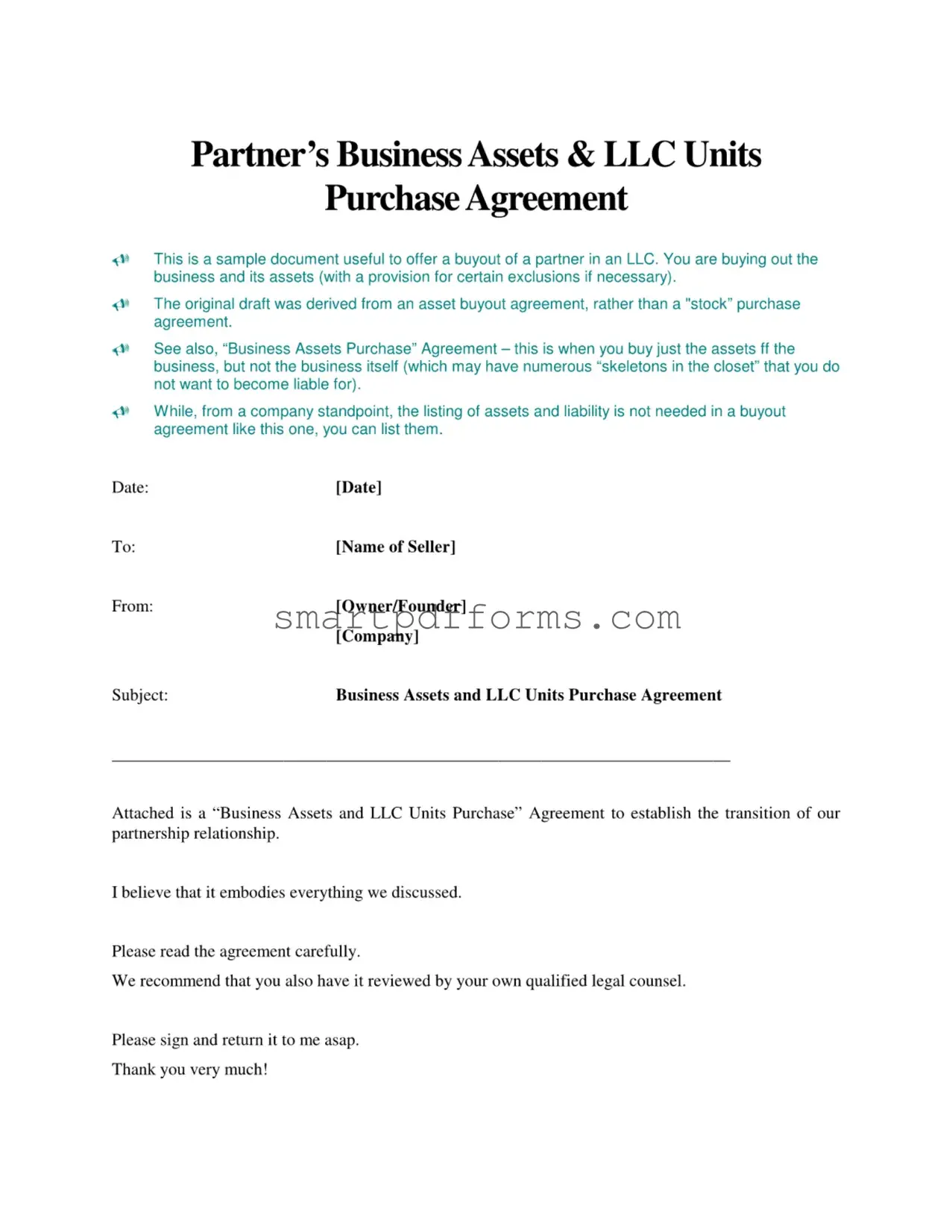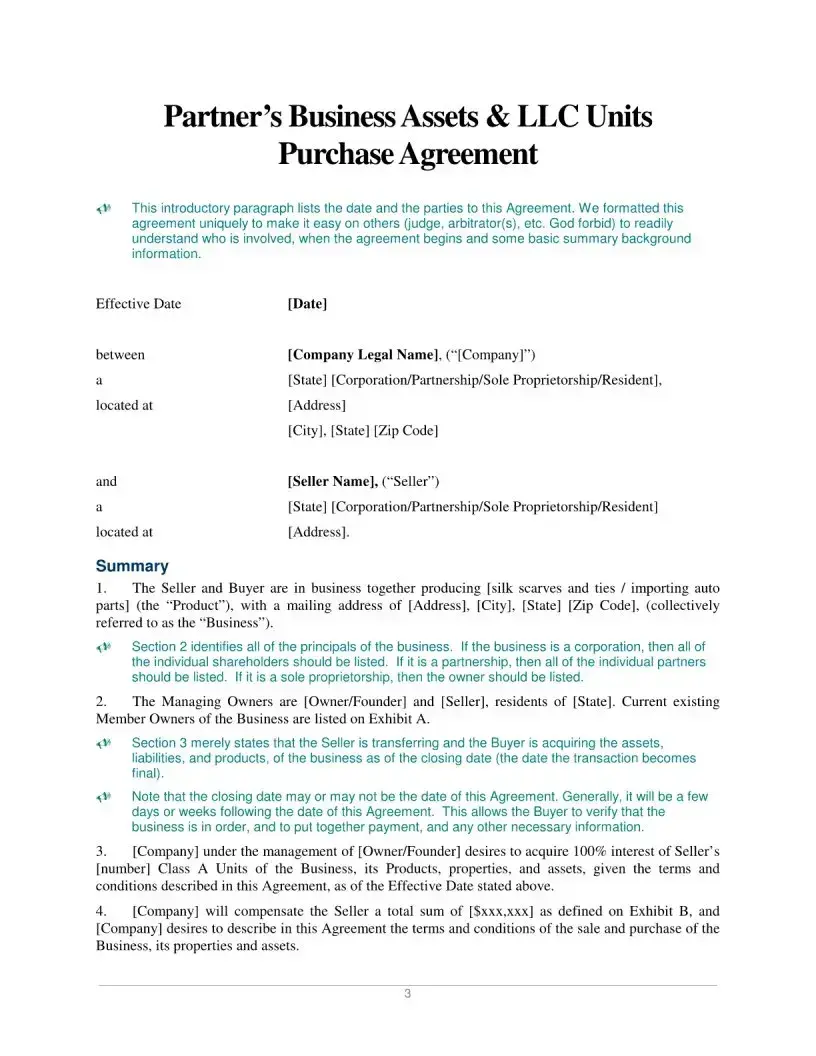In the world of business, navigating partnerships and their evolutions is a significant endeavor, especially when it comes to the transfer of ownership interests. The Partner’s Business Assets & LLC Units Purchase Agreement serves as a pivotal document in this process. This sample agreement offers a streamlined path for business partners to facilitate the buyout of one partner's interest in a limited liability company (LLC), encompassing both the business and its assets, while also providing avenues to exclude specific liabilities thus protecting the buyer from potential undisclosed burdens. Originating from an asset buyout agreement framework, rather than a stock purchase approach, it underscores the preference for acquiring tangible and intangible assets over shares, which may carry unforeseen liabilities. The document begins by defining the effective date and the parties involved, allowing for a clear understanding of the agreement's scope. With detailed sections outlining the transition of ownership, compensation for the seller, and a comprehensive inventory of the assets being purchased—including intellectual property rights—it acts as both a guideline and a formal record of the transaction. The importance of due diligence is highlighted, encouraging verification of the business's order, valuation of assets, and review of liabilities before finalizing the transaction. This agreement not only aims to ensure a fair and transparent transfer of business assets and interests but also emphasizes the need for each party to engage legal counsel to safeguard their interests fully.










